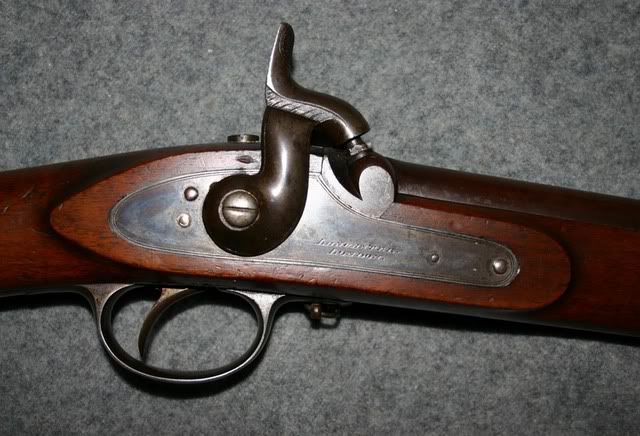paulvallandigham
Passed On
- Joined
- Jan 9, 2006
- Messages
- 17,538
- Reaction score
- 79
I Had an experience with my brother that made me think to share with others, how to measure your Rate of Twist in a barrel, when you are not sure. My brother took delivery on a new .45, and the gunmaker could not remember what the rate of twist it had. When he got the gun home, my brother attempted to measure the ROT, and sent me an e-mail saying it was 1: 43 or 1:44. I didn't think this was right, and he tried to measure it again while I was on the phone with him, today. I had him use a tape measure to measure 30 inches from the muzzle, mark the ramrod with tape, and then draw it out of the barrel the 30 inches, and see where his mark was. His first attempt gave an odd measure, because he tried to stop at 15 inches. He got something like 1:52 inches this time!
Then, I thought to ask if he was using a jag with his patches, or a brush with a patch? He said he was using his jag. That was the problem. The smooth jag was slipping as he started pulling on the rod to back it out of the barrel. He took much more care the next time, and got a half turn in 30 inches, or the 1:60 ROT I was expecting he had.
If you are going to measure your ROT in your barrel, please remember to use a brush with a oiled patch in front of it. The bristles will stay to the grooves, and keep the rod from turning or slipping, while it slowly follows the rifling grooves when you back the rod out.
Another thing to remember is when you first push that brush into the muzzle, stop and pull back on it, so that the bristles form to the back pull motion you will use when you draw it out. If you wait until the brush is all the way to the breech of the gun, it may be very difficult to get those bristles to reverse directions, and you will need two men and a boy to get the brush and rod back out!
If you do get it stuck, twist the rod clockwise as if to tighten the brush on the rod end. This will cause the bristles to turn out of the groove a bit, and free the brush up enough to draw it out. There are some nylon or synthetic brushes made for .45 cal. barrels, usually for modern cartridge gun barrels. You may not find such for the .50, .54, .58, and .62, or larger calibers but for .36, 45, and even the .32, you should be able to find pistol cleaning brushes made of nylon you can also use in your ML rifles and pistols. Like most old guys, I am accustomed to using copper coated steel brushes in my guns, but they are really only needed when you are going after lead deposits. For the BP crud that gathers in rifles, the synthentic bristles work just fine, and are cheaper, to boot.
Does anyone else have a better way to measure Rate of Twist in a barrel?
Then, I thought to ask if he was using a jag with his patches, or a brush with a patch? He said he was using his jag. That was the problem. The smooth jag was slipping as he started pulling on the rod to back it out of the barrel. He took much more care the next time, and got a half turn in 30 inches, or the 1:60 ROT I was expecting he had.
If you are going to measure your ROT in your barrel, please remember to use a brush with a oiled patch in front of it. The bristles will stay to the grooves, and keep the rod from turning or slipping, while it slowly follows the rifling grooves when you back the rod out.
Another thing to remember is when you first push that brush into the muzzle, stop and pull back on it, so that the bristles form to the back pull motion you will use when you draw it out. If you wait until the brush is all the way to the breech of the gun, it may be very difficult to get those bristles to reverse directions, and you will need two men and a boy to get the brush and rod back out!
If you do get it stuck, twist the rod clockwise as if to tighten the brush on the rod end. This will cause the bristles to turn out of the groove a bit, and free the brush up enough to draw it out. There are some nylon or synthetic brushes made for .45 cal. barrels, usually for modern cartridge gun barrels. You may not find such for the .50, .54, .58, and .62, or larger calibers but for .36, 45, and even the .32, you should be able to find pistol cleaning brushes made of nylon you can also use in your ML rifles and pistols. Like most old guys, I am accustomed to using copper coated steel brushes in my guns, but they are really only needed when you are going after lead deposits. For the BP crud that gathers in rifles, the synthentic bristles work just fine, and are cheaper, to boot.
Does anyone else have a better way to measure Rate of Twist in a barrel?








